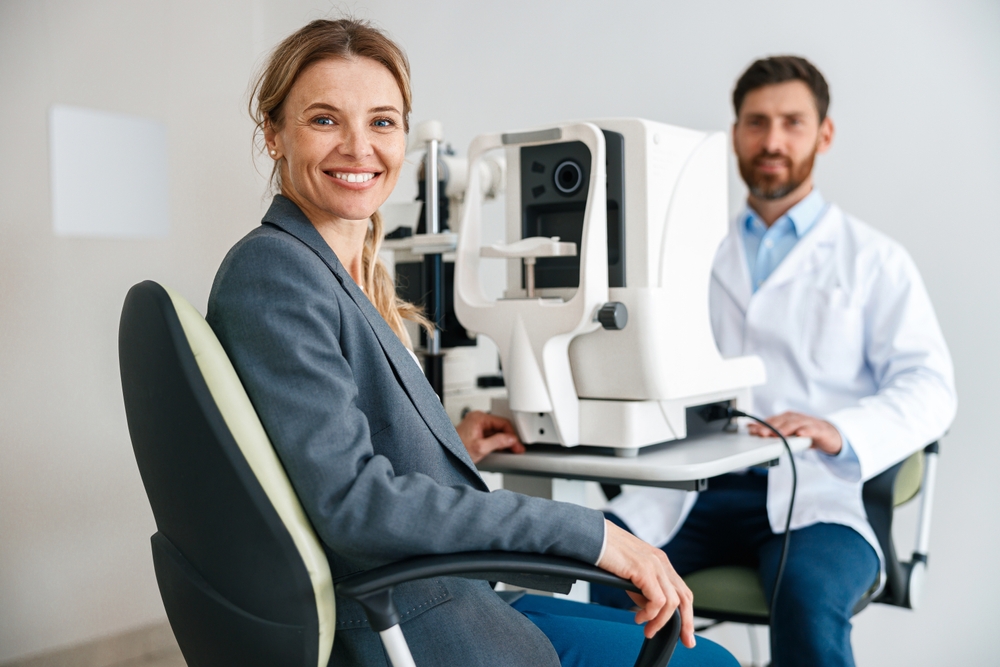
How do you know if your eyes are healthy? There are ways you can tell just by looking at them. The most common way is to check the color of your eye tissue. The part of the eye that covers most of your eyeball (sclera) should be white. Any other color, such as yellow, can point to a health problem like liver disease.
The best way to confirm your eye and vision health is to see your optometrist for an eye exam. Even when you have no trouble seeing and your eyes look okay, an eye exam can help catch problems your bare eyes cannot see.
During an eye exam, an optometrist checks the following.
Patient Medical and Family History
Your optometrist will ask about your medical and family health history. They will also ask about your current health status and whether you are on any medications. This assessment will help your optometrist know your former and current eye health. It will also help determine whether you are at risk for eye diseases and how to prevent them.
Visual Acuity
How well are your eyes seeing? A visual acuity exam will tell you whether your vision is 20/20. As part of the evaluation, you will look at reading charts and read the letters or numbers from various distances. The results from the test will tell if you are nearsighted, farsighted, or have normal 20/20 vision.
Visual Field
A visual field test examines your side or peripheral vision. Your optometrist will hold up an object and slowly move it from one side of your face to the other. You have good side vision if you follow it with your eyes and not your head.
Refraction
The refraction test will evaluate how your eyes respond to light. If there is an error with how your eyes bend light under ordinary conditions, your optometrist will recommend treatment to correct it.
Corneal Topography
Your optometrist uses a computer to draw a map of your cornea. The test helps detect any problems with your corneal shape or curve.
Color Vision
Can you tell colors apart? The color vision exam assesses how well you can distinguish between colors and diagnoses color blindness.
Eye Health
Your optometrist will use various tools and devices to examine the general health of your eye’s inner structures and neighboring tissues. The test will also measure your eye pressure to help catch systemic or undetected illnesses.
What Does an Eye Exam Diagnose?
An eye exam will help detect or rule out the following vision and eye health problems.
- Refractive problems, such as nearsightedness (myopia), farsightedness (hyperopia), age-related farsightedness (presbyopia), or astigmatism.
- Eyesight changes, poor eyesight, and signs of cataracts, macular degeneration, retinal detachment, or glaucoma.
- Eye-muscle problems, including lazy eye (amblyopia) or crossed eyes (strabismus).
- Eye tumor or cancer, such as retinoblastoma and intraocular melanoma.
Changes or problems in the eyes can also indicate the presence of diabetes or autoimmune diseases, such as multiple sclerosis or lupus. They can also be signs of high cholesterol, high blood pressure, and heart disease.
For more on what an optometrist checks during an eye exam, visit Van Alstyne Eye Care at our office in Van Alstyne, Texas. Call 903-482-0090 to book an appointment today.





